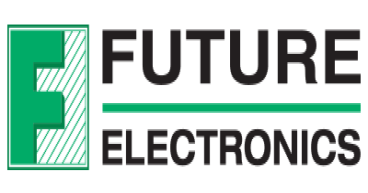I recently attended the Future Electronics Tech Day in Lynnwood, Washington. This was a welcome return to an in-person technology fair with many different vendors sharing their latest technology. Some key presentations were led by ST Microelectronics, Amphenol FCI, Renesas, Laird Connectivity and NXP.
Throughout the event, Future Electronics encouraged us to remember one word: Collaboration.
Embedded Security and Matter
ST Microelectronics shared their new, low-power Bluetooth chipsets with a focus on security and low-power performance. The emphasis on these attributes offers an ideal platform to build new IoT devices for Matter.
Matter is an open source standard for smart home IoT devices. It is actively being developed by some of the biggest names in technology. Matter is an application protocol on the TCP/IP stack aimed at offering a single communication platform for smart home devices. Through this shared protocol, IoT devices from different manufacturers will work together to deliver a seamless user experience.
Customizable EV Connectors
Amphenol FCI gave a presentation on their EV connector solutions. Amphenol connectors are used in many name-brand EV charging stations and electric scooters. However, what sets Amphenol apart is their ability to offer complete customizability. Any connector can be modified to fit a customer’s need for number of ports, size and power rating.
AI for Embedded Systems
Renesas discussed ways they are bringing Artificial Intelligence to IoT edge devices with pre-trained models and optimization of AI for IoT edge devices. Currently, twelve AI models are available from Renesas’ AI SDK with many more pre-trained models planned to be released over the next couple years. Since AI edge devices are often battery powered, Renesas claims their chipsets will consume less power when running AI subroutines than a popular competitor running the same algorithms.
Wi-Fi 6/6E
Laird Connectivity led a fascinating presentation on Wi-Fi 6/6E. The next generation of Wi-Fi comes in two flavors: 6 for the upgraded protocol on the 2.4GHz and 5GHz spectrums and 6E to include the additional 6GHz spectrum. For embedded devices, the most exciting addition to Wi-Fi 6/6E is Target Wake Time where devices may negotiate a wake-up time to turn on their radio for a short period of time to transmit and receive. This can allow huge power savings for devices that only need to transmit once per day or a similar infrequent interval. Other protocol enhancements include OFDMA (a concept initially implemented for cellular devices) and BSS Coloring. Both OFDMA and BSS Coloring allow for more devices talking more clearly on a busy Wi-Fi network.
Tri-Radio Coexistence and Matter
NXP wrapped up the presentations by showcasing their tri-radio MCUs. The three radios are Wi-Fi, Bluetooth and Thread. Wi-Fi is used for high bandwidth applications. Bluetooth is used for initial setup. Thread is used to communicate to lower-power edge devices. All three of these communication protocols form the backbone of Matter, the unified home IoT application protocol. NXP predicts that by 2030, an overwhelming majority of home IoT devices will ship with Matter capabilities.
Summary
“Collaboration” proved to be an apt description of the Future Electronics Tech Day. Matter, as highlighted in two presentations, will require a strong commitment of collaboration among many tech companies to successfully gain a household market share over existing closed-infrastructure systems. I met future collaborators with vendors, suppliers, distributors and other engineering companies. As systems continue to grow more complex, we realize that only through collaboration can we successfully build from concept to production.
Links
Renesas MCU with AI Accelerator
Laird Wi-Fi 6/6E Pre-Certified Modules
Note: This post is not sponsored or endorsed by Future Electronics, ST, Amphenol, Renesas, Laird or NXP.

